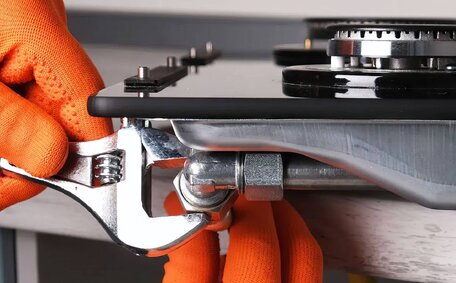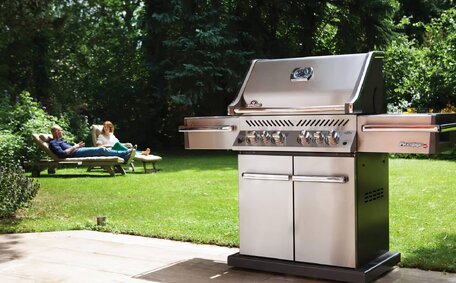
The role of gas fitting in kitchen renovations
When renovating your kitchen, it’s important to engage a licensed gas fitter to safely install, replace or alter any gas appliances and pipes. This ensures
Read MoreKeeping your garbage disposal unit in prime condition is vital for your plumbing’s health and kitchen efficiency. A clean disposal maintained by you can hasten sanitation, ensuring unobstructed flow through your drain. Regular upkeep prevents odours and leaks, maintaining system efficiency.
Neglecting regular maintenance can result in failing grinding components or blades, impairing the unit’s ability to process waste.
This guide outlines essential steps on how to clean and maintain your garbage disposal. We’ll offer advice on maintenance practices, what to avoid putting in the unit, how to inspect for issues, and when professional help is needed. Following these maintenance tips guarantees your disposal’s smooth operation for the long haul.
There are a few key signs indicating your garbage disposal needs attention. Unpleasant odours usually caused by decaying debris within the unit are the most apparent sign your disposal needs attention. Loud grinding noises may signify that inappropriate items are causing resistance and need cleaning.
Diminished waste management efficiency often suggests the need for a thorough cleaning. If the grinding continues without results, check for debris that might get stuck, as it’s a sign the disposal may require a deep clean.
The sink may back up with wet waste, taking longer to process food scraps, if inappropriate materials are put down. If waste isn’t fully processed, it can sometimes be ejected back through the drain, indicating a potential blockage and the need for immediate cleaning and inspection.
Another sign that something’s gone down garbage disposal incorrectly is leaking from connections near the unit, possibly due to a cracked splashguard. During disposal cleaning, any leaks can get promptly repaired to eliminate smells and prevent further issues.
Sealing even minor gaps to prevent wastewater escape is crucial for maximal efficiency and odour control.
Develop a routine for cleaning your disposal every two months or as needed to ensure peak performance. Should these warning signs arise, promptly running water and conducting a thorough cleanup can prevent maintenance issues and potential damage.
Regular cleaning of your disposal unit ensures freshness and smooth operation. Carry out these steps every month or two, including the use of disposal ice in your maintenance routine to keep your garbage disposal clean:
Adhering to tips how clean garbage disposal routines keep your unit fresh and efficient for years. However, if clogs or other issues persist, it’s advisable to contact our team for expert plumbing repairs.
There are several key strategies to prevent future clogs in your garbage disposalhow you maintain it matters:
By implementing these solid prevention tips, routine maintenance can avert numerous future clogs. But if your unit becomes jammed, never stick your hand inside to clear obstructions. Call our team for professional assistance.
Should your garbage disposal become jammed and refuse to turn, follow these crucial steps involving cold water to turn garbage disposal and unclog the mechanism:
Understanding proper maintenance and waste guidelines can prevent most clogs. But jams do occasionally arise which can make immediate attention necessary to avert permanent damage.
There are a few scenarios where it’s crucial to call our professional plumbing team for garbage disposal repairs or maintenance:
Refrain from attempting electrical repairs or internal access; instead, reach out to our customer service for professional help. Our licensed technicians apply expert analysis and specialised tools to transform complex issues into straightforward solutions. We can troubleshoot persistent problems to determine if garbage disposal replacement is required while preventing further plumbing damages.
In deciding to repair or replace your garbage disposal, consider both short-term and long-term financial outcomes. Frequent repairs for minor issues may seem cheaper in the moment, but can add up rapidly. Learning how to choose a new disposal can ensure replacing an old model brings long-term savings on energy and maintenance expenses.
Typical repairs like unclogging jams or replacing worn splashguards range $80-150. professional installation.
But if the grinding chamber, motor or internal wiring requires work, costs jump to $200 or more. New disposals with advanced sound insulation, jam-sensing technology and energy efficiency run $150-350 incl.
Replacement becomes more cost-effective than continuous repairs for units over 5-7 years old. Newer models increase grinding capacity and decrease noise levels for a similar price. They also carry warranties up to 10 years for peace of mind.
Worn motors in older disposal units consume substantially more electricity during operation. Upgrading saves on energy bills while powering through food waste faster. New stainless steel grinding components also resist corrosion better over time.
Our team provides free evaluations on whether your disposal is worth repairing or requires replacement. We handle professional installation, including managing heating cooling elements, using modern units fine-tuned for smooth performance.
When renovating your kitchen, it’s important to engage a licensed gas fitter to safely install, replace or alter any gas appliances and pipes. This ensures
Read MoreGas line repairs require a licensed plumber to locate any leaks, fix damaged pipes and fittings, and properly seal everything to prevent future issues. Contact our emergency plumbers for safe and proper gas line repairs.
Read MoreDuring emergency plumbing situations, crucial safety precautions include turning off the main water supply to prevent flooding, wearing protective gear to avoid injuries, clearing standing water to minimize damage, and calling a licensed professional plumber for assistance.
Read MoreCecil Hills, 2171 NSW
We will call back as soon as possible.




